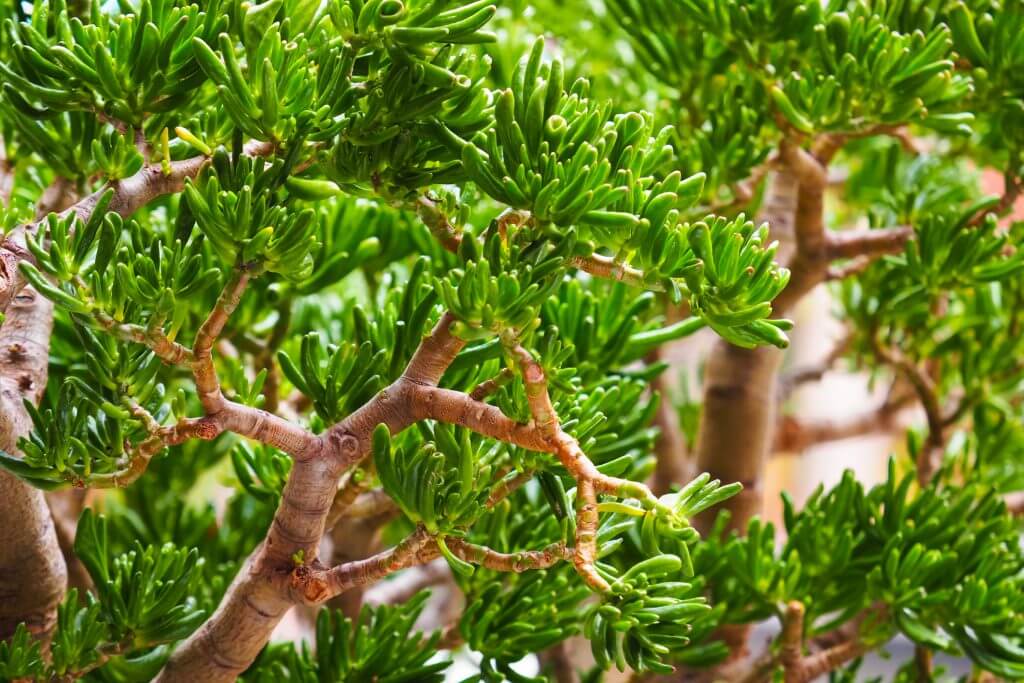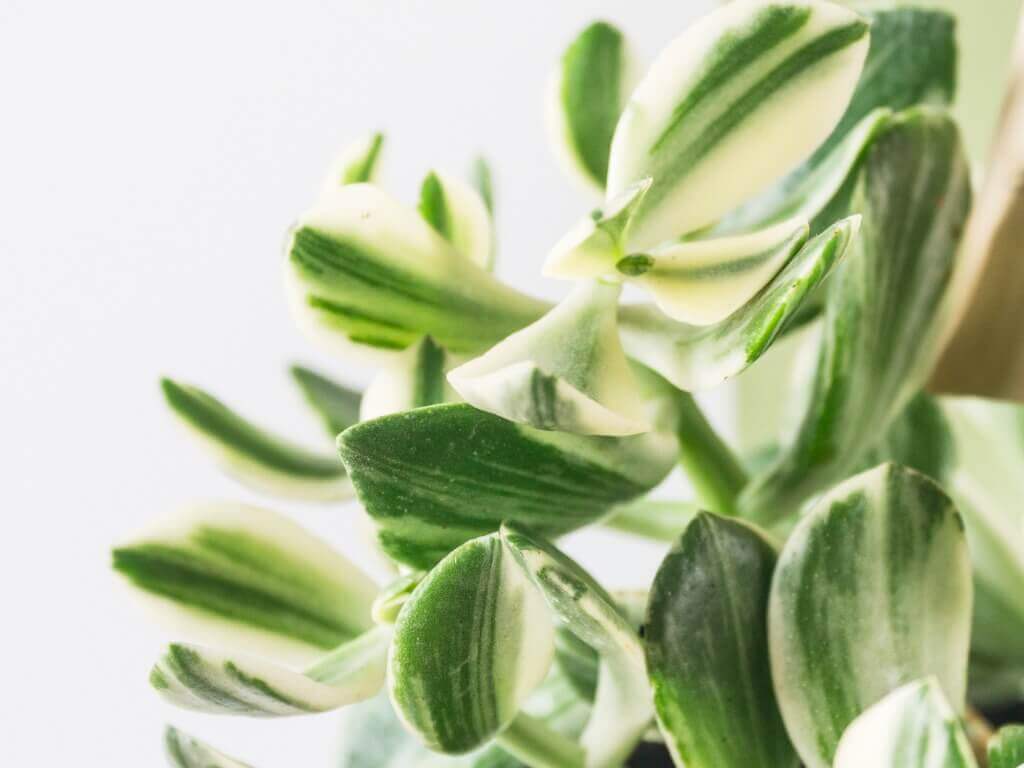Here is another plant to add to your succulent collection: the jade plant.
Succulent plants such as jade plants are relatively easy to care for, and they can add some bright colours and personality, whether indoors or outdoors.

The Basics of Jade Plant
Crassula ovata, also called jade plant or lucky plant is a succulent plant native to South Africa and Mozambique.
It is also called money tree or money plant, but it should not be confused with Pachira aquatica which is also called by the same nickname.
The jade plant can grow to about 8 feet (2.5 metres) high.
This evergreen succulent has thick branches. The main trunk can grow up to 2.5 inches (6 cm) in diameter.
New stems are in the same colour and texture as the leaves but become woody and brown as they mature. However, the branches of the jade plant stay succulent and fleshy throughout its life and do not become true lignified tissue.
The leaves of the jade plant come in rich jade green, but some varieties are more yellow-green, variegated colours, or get an orange or red tinge at the tips.
Its leaves are thick, smooth, and shiny and grow in pairs along its branches and are about 1 to 3.5 inches (3 to 9 cm) and 0.7 to 1.5 inches (1.8 to 4 cm) wide.
Jade plants can produce sweet-scented, small pink or white star-shaped flowers under the right conditions. These flowers grow to about 2 inches (5 cm). The flower stalks of the jade plant grow to about 0.2 inches (5 mm) long.
The jade plant flowers can bloom at the start of winter when the plant is exposed to shorter days and cold nights, combined with lack of water for a few weeks.
Crassula ovata ‘Hummel’s Sunset’
Also known as golden jade, this is a shrubby jade plant that can grow up to 36 inches (90 cm).
The Hummel’s sunset has leaves with bright red or orange and golden edges, as the colours of the sunset.
The Crassula ovata ‘Sunset’, as it is also known grows to about 20 to 39 inches (50 to 99 cm) tall and wide.
It takes about 10 to 20 years for the Hummel’s Sunset to reach its ultimate height.
This jade plant has gained the Royal Horticultural Society’s Award of Garden Merit.


Crassula ovata ‘Gollum’
Crassula ovata ‘Gollum’ is also known as ‘Hobbit,’ ‘Cristata,’ and ‘Monstruosa.’
Like the Hummel’s Sunset, Gollum also gained the Royal Horticultural Society’s Award of Garden Merit.
This jade plant has trumpet-shaped or tubular leaves that have a reddish tint.
It is shrubby and is skimpy-branched.
The Gollum grows to about 36 inches (90 cm) tall and about 24 inches (60 cm) wide.


Crassula ovata ‘Tricolour’
This Jade plant has stout stems. It has green round leaves with creamy yellow and white variegations.
This jade plant is ideal, whether indoors or outdoors.
The tricolour jade plant grows to a maximum height of about 12 inches (30 cm).
When exposed to a little more drought and more sun, this succulent will develop pink streaks.
This jade plant produces white star-shaped blooms in the winter.


Crassula ovata Minima
Also known as Crassula ovata Minor.
This is a dwarf variety of the jade plant and is ideal for indoors as it is not as hardy as the other jade plant varieties.
It reaches its full-grown height of 10 to 20 inches (25 to 50 cm) and width of 20 to 30 inches (50 to 75 cm) in about three years.
The dwarf jade plant produces white flowers.


Planting Your Jade Plant
Sun and Position
Tricolour and dwarf jade plants are ideally planted in containers indoors as they prefer partial and filtered sun.
Hummel’s sunset and Gollum prefer full sun, at least four (4) and up to six (6) hours a day.
You also need to choose a position for your Hummel’s sunset that is sheltered from harsh wind.
Soil
Choose a planting medium for your jade plant that is well-drained as they can suffer root rot when exposed to soggy soil for some time. Loam, sandy loam, or sandy soil is ideal.
Jade plants can tolerate most soil as long as it is not overly acidic or alkaline.
Timing
If propagating from seeds, sow at 58 to 64 °F (15 to 18 °C) in early spring.
Propagate from cuttings in spring to early summer.
Caring for Your Jade Plant
Water
Jade plants, like all succulents, do not need too much water. Overwatering will harm them as they can be susceptible to root rot.
However, they do suffer from too much drought so take precaution not to leave your jade plant too dry for long periods.
Fertilising
Jade plants do not require fertilisers as they are hardy and low maintenance.
However, jade plants in containers may need some feeding once in a while.
Choose mild, organic, and slow-release fertilisers. Take care not to over fertilise your jade plants.
Pruning
Jade plants generally do not need pruning. You can deadhead or trim off dead leaves.
You can also lightly prune your jade plant to keep it in the size and shape you want, but do so with care and do not take too much off.
Common Problems with Jade Plant
Jade plants are usually not susceptible to diseases, but they can be attacked by pests such as aphids, scales, vine weevil, spider mites, and mealybugs.
Apply the appropriate insecticide to control pests from your jade plant.
Precaution on Jade Plants
Jade plants can be toxic to pets such as horses, cats, and dogs.
The sap of the jade plant can cause irritation such as dermatitis in humans.
Please check out our guides to find out more about other succulent plants and other flowering plants.
[elementor-template id=”4604″]
[elementor-template id=”6387″]
